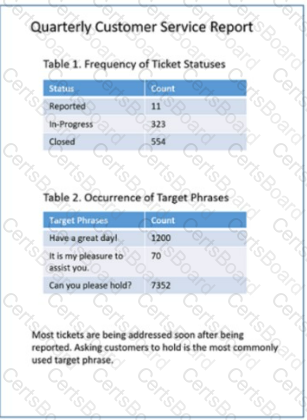Create a dashboard with a date range picker and calculations built in. This is because a dashboard is a type of visualization that displays multiple charts or graphs on a single page, usually to provide an overview or summary of some data or information. A dashboard can be used to track company sales across various date ranges by showing different metrics and indicators related to sales, such as revenue, volume, or growth. By creating a dashboard with a date range picker and calculations built in, the analyst can suggest a way for the user to have a dynamic, seamless experience, which means that the user can interact with and customize the dashboard according to their needs or preferences, as well as avoid any manual work or errors. For example, a date range picker is a type of feature or function that allows users to select or adjust the time period for which they want to see the data on the dashboard, such as daily, weekly, monthly, or quarterly. A date range picker can make the dashboard dynamic, as it can automatically update or refresh the dashboard with new data based on the selected time period. Calculations are mathematical operations or expressions that can be performed on the data on the dashboard, such as addition, subtraction, multiplication, division, average, sum, etc. Calculations can make the dashboard seamless, as they can eliminate the need for manual calculations for each date range, as well as ensure accuracy and consistency of the results. The other ways are not the best ways to provide a dynamic, seamless experience for the user. Here is why:
Creating multiple reports, one for each needed date range would not provide a dynamic, seamless experience for the user, but rather create a static, cumbersome experience, which means that the user cannot interact with or customize the reports according to their needs or preferences, as well as have to deal with multiple files or pages. For example, creating multiple reports would make it difficult for the user to compare or contrast the sales across different date ranges, as well as increase the workload and complexity of managing and maintaining the reports.
Building calculations into the report so they are done automatically would not provide a dynamic, seamless experience for the user, but rather provide a partial, limited experience, which means that the user can only benefit from one aspect or feature of the report, but not from others. For example, building calculations into the report would help with avoiding manual work or errors, but it would not help with interacting with or customizing the report according to different date ranges.
Adding macros to the report to speed up the filtering and calculations process would not provide a dynamic, seamless experience for the user, but rather provide an advanced, complex experience, which means that the user would need to have some technical skills or knowledge to use or apply the macros, as well as face some potential risks or challenges. For example, adding macros to the report would require the user to know how to write or run the macros, which are a type of code or script that automates certain tasks or actions on the report, such as filtering or calculating the data. Adding macros to the report could also expose the user to some security or compatibility issues, such as viruses, malware, or errors.



